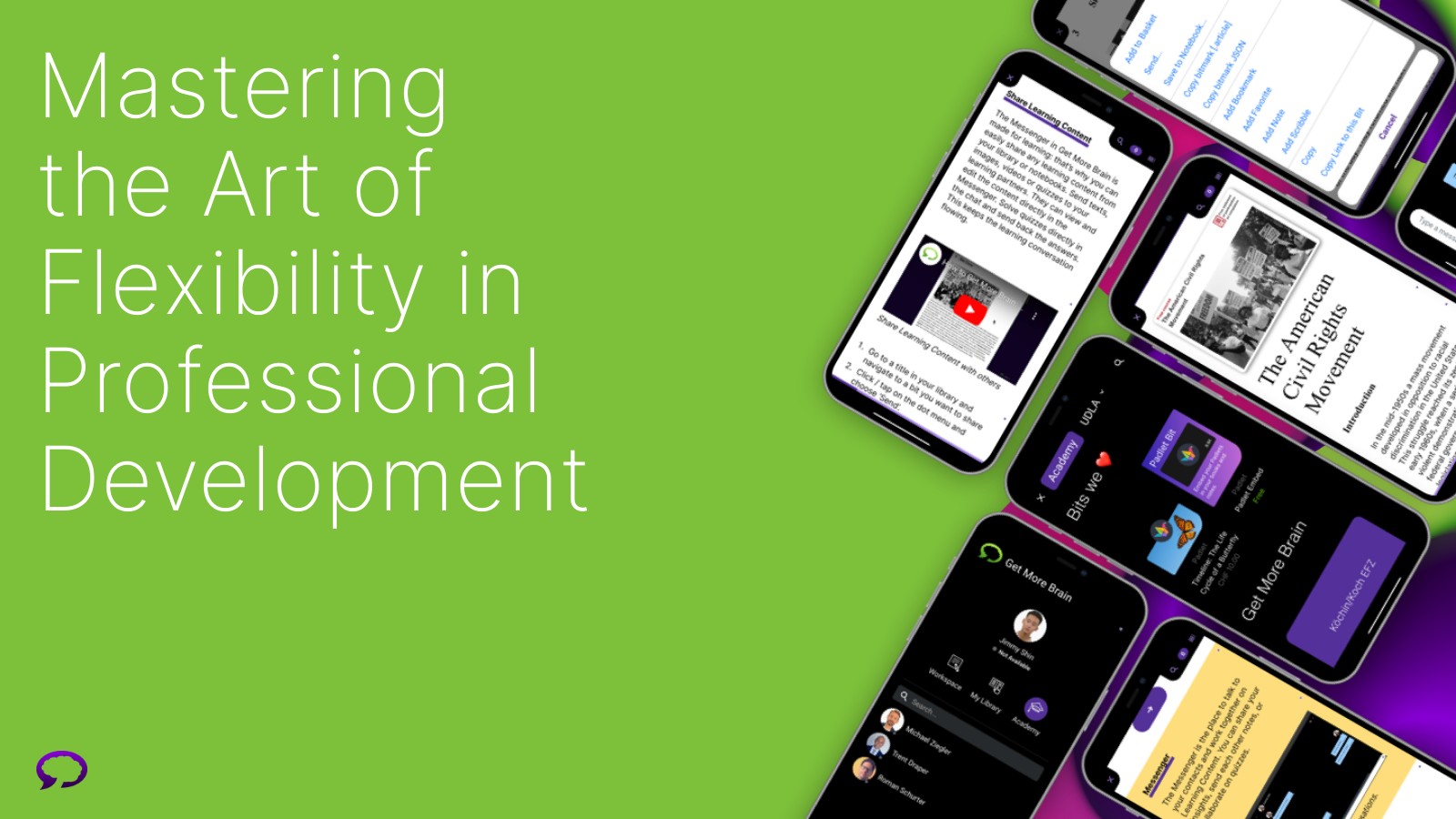As we continue with the top learning trends of 2024, our journey brings us to Hybrid Learning Models — a blend of digital and traditional learning methods. This fusion, captured in the mantra ‘Blend to Ascend,’ marks a significant shift in the landscape of education and professional development, offering versatility and enrichment in learning experiences.
The importance of this trend was catapulted into the spotlight in 2020, as the world grappled with the COVID-19 pandemic. Suddenly, traditional modes of education and workplace training were disrupted, underscoring the need for more flexible and resilient learning frameworks.
During this period, I encountered firsthand the challenges and opportunities brought on by this sudden shift. In a role entrenched in the traditional, office-based onboarding and training of a team, the abrupt transition to remote work created unforeseen challenges. The lack of face-to-face interaction, compounded by our unpreparedness for a fully digital delivery, tested our adaptability and resilience. It wasn’t just about losing the physical presence, it was a wake-up call to the critical need for learning models that could hand a remote or hybrid workforce.
It highlighted the reality that our existing systems were not equipped for the sudden, sweeping need to go digital. Yet, it also opened up avenues to innovate and integrate learning technologies in ways that had been previously unexplored or underutilized. This period of trial and adaptation paved the way for the hybrid learning models we advocate today.

Understanding Hybrid Learning
At the core of hybrid learning is the strategic integration of online platforms with traditional, in-person interactions, creating a multifaceted approach that optimizes the strengths of both the digital and physical words. This innovative model champions the principle that, although digital solutions offer unprecedented flexibility and broad accessibility, the profound impact of direct human interaction in the learning process remains vital. Hybrid learning is thus designed to achieve a balance, skillfully combining the convenience and adaptability of online resources with the rich, engaging dynamics of face-to-face connections.
Hybrid learning stands out for its ability to cater to diverse learning styles and preferences, making education and professional development not just more accessible, but also significantly more resonant and effective. By combining the innovation of digital learning with the tangible benefits of in-person experiences, it fosters a learning environment that is both inclusive and versatile. This approach is particularly crucial in today’s professional landscapes, offering a solution that not only overcomes geographical limitations but also deeply enriches the learning experience through a blend of personalization and direct engagement.
Redefining Professional Development
Hybrid learning models offer a flexible framework that respects the unique needs and learning preferences of each individual, bridging the gap between traditional in-office arrangements and the growing trend of remote work. This innovative blend goes beyond mere convenience, aiming to craft a learning journey that’s as personalized as it is comprehensive.
Employees reap substantial benefits from this versatile model. They gain from the direct, interactive sessions that workshops and seminars provide, alongside the flexibility and depth offered by online learning resources. This combination ensures a more compelling and effective learning experience, leading to better retention of knowledge and its immediate application to day-to-day tasks.
By adopting hybrid learning, organizations are not just responding to the changing dynamics of the workplace. They’re actively fostering a culture of continuous learning and adaptability. This approach aligns perfectly with the needs of a modern workforce, seeking not only to enhance skill sets but also to cultivate a sense of engagement and belonging among employees, regardless of their physical location.
Strategic Advantages in a Nutshell
Hybrid learning models transcend traditional education boundaries, offering strategic advantages by embracing the 70:20:10 model, which emphasizes learning from on-the-job experiences (70%), interactions with others (20%), and formal education (10%). This framework not only broadens the scope of professional development but also aligns it closely with performance improvement. Hybrid learning is adept at merging these elements, facilitating a learning environment where knowledge acquisition and application go hand in hand with enhancing job performance. This integration ensures that learning directly contributes to organizational objectives, making it a strategic asset rather than just an educational activity.
By leveraging the 70:20:10 model, hybrid learning creates personalized development pathways, enabling employees to tailor their learning experiences to their specific roles and career goals. This approach fosters a culture of continuous improvement and agility, where development is closely linked to real-world applications and business outcomes. It positions hybrid learning not just as a flexible educational choice but as a pivotal business strategy, ensuring that learning and performance enhancement are interwoven into the very fabric of the organization’s daily operations.
Harnessing AI for Enhanced Hybrid Learning
The introduction of Artificial Intelligence (AI) in hybrid learning models is transforming the landscape of professional development, bringing in an era of personalization and efficiency. At the forefront of this evolution is Get More Brain, a platform that exemplifies the power of AI to facilitate learning precisely when and where it’s needed. By integrating AI-driven insights, Get More Brain seamlessly aligns with the hybrid learning model, supporting the natural flow of work with targeted knowledge and personalized learning paths. This approach not only streamlines the acquisition of new skills and knowledge but also ensures that learning is directly applicable, enhancing job performance without disrupting daily tasks.
AI’s role in hybrid learning extends to sophisticated knowledge management, enabling learners to access the right information at the right time. Get More Brain leverages AI to curate and deliver content that is most relevant to the learner’s immediate needs and long-term goals, effectively bridging the gap between learning and doing. This intelligent customization fosters a more engaging and impactful learning experience, where every interaction is an opportunity for growth. As hybrid learning models continue to evolve, the integration of AI technologies like those offered by Get More Brain represents a pivotal shift towards more dynamic, effective, and personalized professional development.
Engaging the Community: Your Insights on Hybrid Learning
As we navigate the implications of hybrid learning models for the future of work and education, your insights and experiences are invaluable. How have hybrid learning models impacted your professional development or your organization’s training strategies? What potential do you see in the integration of AI to further enhance these hybrid learning experiences?
In an era that demands both flexibility and depth in learning, hybrid learning models stand out as a compelling response to the needs of modern professionals and organizations. As we continue to explore the key learning trends of 2024, the role of innovative platforms like Get More Brain in supporting these hybrid environments becomes increasingly central. Together, let’s embrace the opportunities presented by hybrid learning models, paving the way for a more adaptable, resilient, and skilled workforce.
Stay tuned for more insights as we delve deeper into the transformative trends shaping the future of learning and work. Join me on LinkedIn and Medium as we navigate these exciting developments, fostering a dialogue that not only shares knowledge but also drives us towards collective growth and innovation in the realm of professional development.
This post was first published on Medium.


